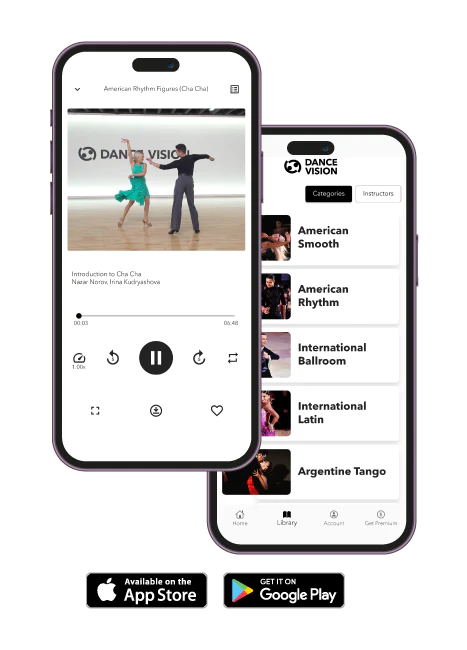Dance Vision owner Wayne Eng reminisces about the time when competitive dancers would dance on marble floors at certain dance competitions and studios—it was not conducive to good dancing let alone dancing for long periods of time on such hard, unforgiving surfaces! Since, the ballroom industry has learned that if dancers want to extend the life of their dancing, it is essential that the dance floor is made in their likeness, to support years of dancing and healthy joints. Ballroom dancers require one piece of equipment for their bodies, and one piece of equipment to dance on. Proper dance shoes are an essential aspect of a good quality practice or competition, yet how often do we consider the floor that our dance shoes glide across?
Price
How Much Does a Beech Wood Dance Floor Cost?
Ah, let's begin with the elephant in the room. Dance floors are a large investment for a dance studio but will contribute to the longevity of both the dancers and the studio as a whole. While a dance floor is likely the largest investment to be made within a studio, our research shows that a quality dance floor is of the utmost importance to new and seasoned dancers when considering their dance studio—more important than chandeliers, good changing rooms, or an area to lounge in. Dance Vision Floors are about $10.50 per square foot—this worthwhile investment will inspire dancers to feel limitless in their dancing and promote longevity within their craft when they dance on a floor that keeps their bodies well.
Most Beech Wood dance floors cost $15,000 - $30,000, including installation and basic transitions. As with any other dance floor, this can increase dramatically when you choose different colors, grades, surface treatments, transitions, and so on.
Can I Purchase Just the Floor?
The simple answer is yes, you can purchase the floor alone. However, know that a successful dance floor installation involves purchasing more elements than the floor itself, including a set up fee, foam, clipping system and more.
Small floor (1,000 sq. ft.): $8,400
Medium floor (2,500 sq. ft.): $21,000
Large floor (4,000 sq. ft.): $33,600
These price ranges include the floor only.
What’s the Installation Process Like?
A majority of people purchase all components necessary for a floor install and select Dance Vision and our team of professionals to set up the floors for their studio. This option takes all of the hassle out of navigating any issues that may arise.
An installation typically includes:
- Subfloor Check
- Moisture Barrier
- Dance Foam
- Clips
- Expansion Blocks
- Gluing
- Finishing
Small floor (1,000 sq. ft.): $10,000 - $15,000
Medium floor (2,500 sq. ft.): $25,000 - $35,000
Large floor (4,000 sq. ft.): $40,000 - $55,000
While most flooring we sell is Beech Wood, there are other available options, which lower in performance and longevity as time goes on. Beech Wood is followed by Maple Wood, the second tier solid wood species. Following Maple Wood is the third tier of flooring, called Synthetic (also known as an engineered floor). While it is the least expensive, this multi-layered wood floor is by far the lowest in performance and longevity.
Beech Wood is our most popular seller for several reasons, compared to Maple Wood and Synthetic.. Maple Wood, unlike Beech Wood, has a more extensive installation process and is not removable. If you want to move your dance floor, in the chance you change locations, you must remove nails in the wood and the floor can become damaged in the process. While traditional Maple Wood costs less upfront, the finishes required increase the cost drastically; sanding and a week-long finish process leaves the floor with an unknown completion date, meaning it can be a faster or slower set up than you had planned. With Beech Wood, there is nothing unexpected with installation, and moving your floor from one studio to another is not detrimental to the integrity of the floor.
Prices for Other Options
Maple Wood: $12,000 to $28,000
Synthetic: $7,500 to $12,000
Benefits
Floors That Endure Everything from Apels to Scatter Chasses...
Dance Vision floors last for years to come—believe it or not, our customer Dorothy Decker, has had her floor for 23 years and still describes it as, “spectacular.” Other than some customers who choose to refinish their floors after 15+ years, our floors also require relatively no maintenance. Donald Johnson, owner of the Ballroom Center in Libertyville, Illinois, has had his Dance Vision Floor for years and says he, “simply has to sweep the floor and the speed remains excellent.” Having danced on concrete floors at studios in the past, he says that there is no need for water or castor oil on the floor, it is comfortable to dance on without anything on top of it.
Health is Wealth
If you are a studio owner, the health of student dancers, professionals and instructors, and studio staff is of utmost importance. A force-reducing floor like ours is considered in the dance community an integral component of a safe and comfortable dance environment.1
In movement science, standing, landing, and bouncing/jumping can all be considered types of loading tasks. Loading tasks place effort on our joints, which when managed properly with good alignment will not result in injury. Dance instructors are an excellent resource to ensure that student dancers are moving in a way that supports the health of their joints, bones, and muscles.
However beyond this, a proper floor is the most important aspect of joint, bone and muscle health for dancers. Ballroom dancers perform loading tasks frequently, such as a Tipsy in Quickstep, or a Basic Movement in Jive, and it is essential that the quality of the dance floor supports musculoskeletal health and longevity. Hard floors such as concrete, marble, or even wood placed directly on concrete, have been suggested to influence injury risk, especially at the ankle joint.1
An unsafe dance floor atop an inflexible surface is a liability for dancers personally as they risk the health of their musculoskeletal system, and also a liability for a dance studio as they risk injury to dancers if they fall. Dance Vision floors are made to support the health of dancers’ bodies first—we use flexible, solid hardwood, which is press-dried to produce unmatched moisture resistance and improves dimensional stability. Underneath the wood, foam is placed to promote a softer feeling on the floor. These two properties produce a floor that is not only comfortable but safe to dance on.
Those who spend many hours of their day on a dance floor, such as professionals and instructors, understand that it can be extremely challenging to stand and move on an unforgiving surface—this is one of the many reasons why large-scale dance operations like Dancing With the Stars, to local community studios such as Dance Daly Ballroom Studio in Mission Viejo, California, have chosen Dance Vision floors. “I can dance all day and my body continues to feel great,” says Jason Daly, owner of Dance Daly.
Floors a Flexible as Dancers...Move it Anywhere!
Did we mention the extreme convenience of Dance Vision floors? Our innovative clipping system allows you to take your floor with you wherever you go, extending your investment into any location. Dance Vision Beech Wood floors use a one-of-a-kind clip and groove system—there are no nails at all! The clips are invisible under the wood boards and hold the individual boards in place, resulting in a more flexible floor that is comfortable and safe for dancing. Should your dance studio relocate, the boards can be easily removed and installed directly atop any level of subfloor at a new location.
Process
Curious about the process of getting a dance floor? After a few easy steps, you’ll be jiving away. First, pick a color: we have six to choose from although Beech Wood is our most popular. Next, select the look of the hardwood, deciding whether you prefer something more uniform or something more natural. After, choose a surface treatment: clear, silk-matte, or ultra-matte are all easy to clean and maintain, though silk-matte, the most popular flooring choice, is very suitable for a busy dance studio that is consistently walked and danced on. Choosing the size of your foam layer is next, and we recommend the ½ inch, providing the most cushion and comfort for dancers and instructors alike. Finally, select optional reducers, transitions, and or wall bases. Whether you are ending your floor against a wall or transitioning to a different type of floor, we have wood options for you. If you’re curious about the actual installation process, see this video.
Dance Vision Floor Specialist installing a Beech Wood Dance Floor for a home studio.
At Dance Vision, we believe that ballroom dancers deserve the best. If your goal is healthy and happy dancers with limitless possibilities for their dancing, our floor is the first step! When you’re ready for a free quote, all you’ll need is an approximate floor size and estimated install date—then our team will take it from there. What’s next? A dance party, of course! When our professional flooring specialists take care of the set up, all you have to worry about is the disco ball and your favorites tunes. See you on the dance floor!
Request a free quote today or click here to learn more!
References
- Hopper LS, Wheeler TJ, Webster JM, Allen N, Roberts JR, Fleming PR. Dancer perceptions of the force reduction of dance floors used by a professional touring ballet company. Journal of Dance Medicine & Science. 2014 Sep 15;18(3):121-30.

